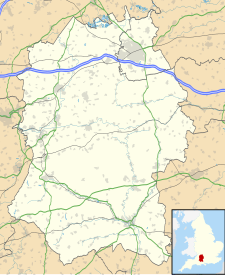Old Manor Hospital, Salisbury
| Old Manor Hospital (formerly Fisherton House Asylum) | |
|---|---|

Main entrance of the Old Manor Hospital taken in about 1974
|
|
| Geography | |
| Location | Salisbury, England, United Kingdom |
| Coordinates | 51°04′22″N 1°48′37″W / 51.072792°N 1.810212°WCoordinates: 51°04′22″N 1°48′37″W / 51.072792°N 1.810212°W |
| Organisation | |
| Care system | UK:NHS from 1955 |
| Funding | Government (formerly private) |
| Hospital type | Specialist |
| Services | |
| Speciality | Psychiatry |
| History | |
| Founded | 1813 |
| Closed | 2003 |
| Links | |
| Lists | Hospitals in England |
The Old Manor Hospital was a psychiatric hospital in Salisbury, Wiltshire, England. It functioned first as a Victorian private licensed house called Fisherton House or Fisherton House Asylum from the early 19th century. It was the largest private madhouse in the United Kingdom. In 1924, following a change of proprietors, it was renamed Old Manor Hospital and in 1955 it was amalgamated into the National Health Service. From 1813 to 1955 it was owned and managed by members of the same family. The Old Manor Hospital closed in 2003 and was replaced by Fountain Way, a smaller, modern, psychiatric hospital on part of the same site. In 2014 the site was acquired by Quantum Group for development as a residential estate and the conversion of the main building to a hotel.
In the early 19th century Dr. William Corbin Finch, a London surgeon, bought Fisherton House in Fisherton Anger, a village to the west of Salisbury. At that time it was outside the city but due to urban development the site on the lower part of Wilton Road is within the city boundary. It is recorded that patients were received in 1813 and Fisherton House was sold as a "mental institution" to Charles Finch in 1813.
According to William Parry-Jones in his book The Trade in Lunacy, A Study of Private Madhouses in 18th and 19th Century Britain, the asylum did not appear on an 1815 list of businesses in Salisbury but was certainly functioning by 1826. At that time William Corbin Finch also owned , in a village east of Salisbury, and Kensington House and The Retreat in The Kings Road in London, all licensed madhouses. Dr Finch also gave evidence to the 1815 Select Committee who were investigating conditions in private madhouses across England. Their report came to nothing due to lack of co-operation from the asylums.
Fisherton House was subject to the Madhouses Act of 1774, which prescribed certain rules and conditions regarding private asylums run for profit. Briefly, asylums had to notify the Metropolitan Commissioners of Lunacy of any admissions, in order to maintain a countrywide register; asylums had to be supervised by a qualified doctor and submit to regular inspections by the local Quarter Sessions. The 1828 Madhouse Act superseded the 1774 Act and made provision for local magistrates to visit four times each year to inspect the condition, provision of care and regulation of the asylum. There was a securely bound Visitors' Book in which the visiting magistrates were obliged to record anything they regarded as important, whether positive or negative. One of the sections of the 1774 Act provided that a person could be admitted to an asylum on a single certificate signed by a physician, surgeon or apothecary of unspecified qualification. In 1815 William Corbin Finch expressed concern, with other asylum owners, over the literacy of some apothecaries. He illustrated this with an admission note he had received from a local apothecary:
...
Wikipedia

